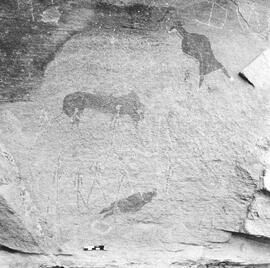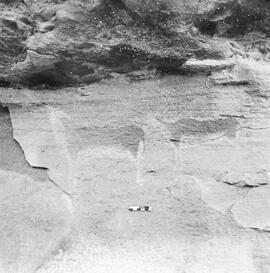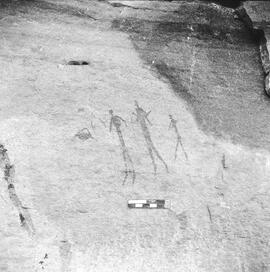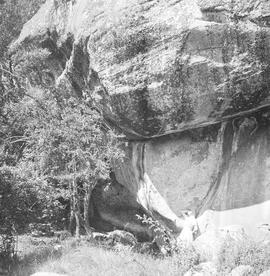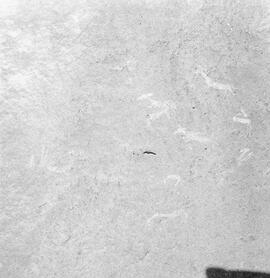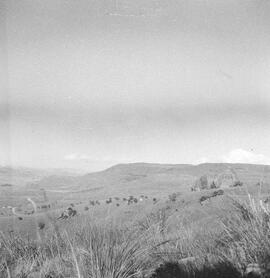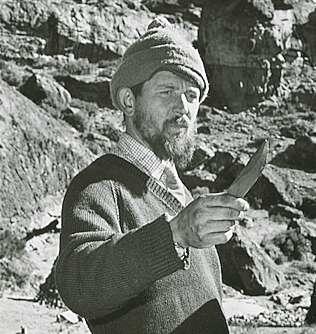Identity area
Reference code
Title
Date(s)
Level of description
Extent and medium
Context area
Name of creator
Biographical history
Created on: 29/01/2007
Amended by: stephane
Amended on: 15/05/2007
Name of creator
Biographical history
The KwaZulu-Natal Museums is a cultural and natural history museum renowned for its unique collections - there are eight natural history and around ten cultural history galleries that include an array of mammals (together with the last wild elephant in KwaZulu-Natal), birds, amphibians, insects, an extensive mollusc collection and a life-size T-Rex model. There is also a room dedicated to KwaZulu-Natal history, geological and Paleontological material, and a reconstruction of a Victorian street set in the late 1800's, complete with shops, stable and period homes. Take a walk through a life size recreation of a Drakensberg cave with rock art drawings or a walk on the wooden deck of a wrecked trading vessel in our Towns and Trade Exhibition.
What makes the KwaZulu-Natal Museum particularly interesting is the array of interesting temporary exhibitions that give the museum a definite dynamic advantage. Temporary exhibitions and happenings have included an exploration of the history of segregation in the US, xenophobic violence, children’s art exhibition. The Museum officially opened an exciting exhibition on the Soccer World Cup, in May 2010. The 150th anniversary of the arrival of Indian people to South Africa was celebrated in November 2010, with the launch of a new permanent exhibition showcasing the Indian community of Pietermaritzburg. The KwaZulu-Natal Museum is also very popular with the schools and family visitors alike.
Repository
Archival history
Immediate source of acquisition or transfer
Content and structure area
Scope and content
Appraisal, destruction and scheduling
Accruals
System of arrangement
Conditions of access and use area
Conditions governing access
Conditions governing reproduction
Language of material
- English
Script of material
- Latin
Language and script notes
Physical characteristics and technical requirements
Finding aids
Allied materials area
Existence and location of originals
Existence and location of copies
Related units of description
Notes area
Note
Pat was accompanied to Sudan by Patricia Vinnicombe, whom he first met in 1955 and whom he later married in 1961. After a short return to Ghana, both moved to Cambridge in 1963 where Pat went to St John's College to study Part II of the Archaeology and Anthropology Tripos. Here he worked with Eric Higgs in Greece in 1965 and 1966, and Higgs' emphasis on investigating the relations between people and the landscape they inhabit as well as his excavation techniques strongly influenced Pat. Once Pat completed his BA he returned to East Africa where he worked as Curator of the University Museum at Dar es-Salaam, a post he resigned from after two years due to dissatisfaction with the impact government policy had on the efficient running of the museum.
At this point, Pat began to initiate a fieldwork programme in the Maloti-Drakensburg Mountains of Lesotho and KwaZulu-Natal. The fact that Patricia Vinnicombe had grown up here and had been tracing and recording rock art in the region for over a decade, coupled with the fact that Pat had previously worked with the Natal Museum (in the 1950s) made this locality an obvious choice. Also, the potential for a holistic study of rock art, 'dirt' archaeology and landscape change in the Drakensburg was obvious to both Pat and Patricia. After surveying and recording sites in Lesotho and South Africa, six rock-shelters were excavated: Moshebi's Shelter in 1969, Belleview in 1969/70, Good Hope, Ha Soloja and Sehonghong in 1971, and Melikane in 1974. The Lesotho sites, in particular, were very difficult to access and to do fieldwork there would have been a challenge.
Pat completed his doctoral thesis in 1978. Among other things, his thesis dealt with his principal interests in Lesotho and southern KwaZulu-Natal - firstly, establishing a cultural-stratigraphic sequence for this area's archaeology, and secondly, that of investigating how people exploited and moved across the landscape. His excavations and surveys, undertaken jointly with Patricia, put Lesotho's archaeology on the map and established the potential for future investigations of Middle Stone Age assemblage variability and hunter-gatherer adaptations and palaeoenvironmental change.
Pat returned to Cambridge and was appointed assistant curator at the University Museum of Archaeology and Anthropology in 1973 and became a senior assistant curator in 1989. Here he was involved mainly in the Museum's Stone Age collections, and reorganization of displays. He also played a vital role in teaching Palaeolithic archaeology to students, and was still active in excavating sites in Greece (namely Epirus and Klithi). He was also an active contributor to Downing College life and this was recognized by his election to an Emeritus Fellowship on his retirement in 1991.
He suffered from cancer of the kidney and pneumonia in 1997, followed by a mild stroke in 1998 but still made full use of his retirement in which he did great deal of traveling around the world. He died at his home, on the Shropshire/Worcestershire border, on 8th of March 2004.



